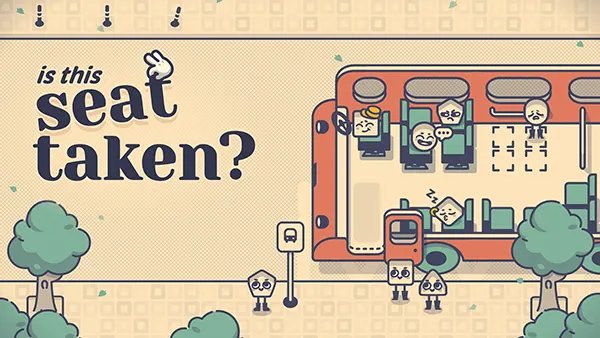
Is This Seat Taken? — A Logical Tale About Shapes and Their Feelings
In 2025, children’s literature increasingly blends learning with storytelling, making abstract concepts easier to grasp. One notable example is “Is This Seat Taken?” — a modern logical fable that uses shapes as characters to explore emotions, identity, and problem-solving. This story is not only a playful way to introduce geometry but also a meaningful reflection on how feelings shape our interactions. Below, we will explore its themes, educational value, and emotional impact in depth.
The Story’s Concept and Its Role in Education
“Is This Seat Taken?” presents a world where circles, triangles, and squares live side by side, each with their own quirks and emotions. By transforming shapes into characters, the tale helps children visualise abstract mathematical ideas while simultaneously learning empathy. For example, a triangle may feel excluded because it does not fit neatly beside a circle, which mirrors real-life feelings of difference and belonging.
In classrooms, the book is increasingly used as a resource to combine literacy with mathematics. Teachers highlight how the characters’ interactions symbolise mathematical relationships, such as fitting together or standing apart. This approach makes lessons more interactive, offering a cross-curricular experience that develops both logic and emotional intelligence.
Another important aspect is how the story tackles inclusivity. By portraying shapes with distinct emotions, it shows that difference does not equal exclusion. Children learn to respect diversity, understanding that every figure, whether round or angular, has a place at the table.
Why Shapes as Characters Matter
The decision to use shapes rather than traditional animal characters is deliberate. Shapes are universal, recognisable across cultures, and neutral in meaning. This neutrality allows children to project feelings onto them without bias, fostering creativity and personal interpretation.
Moreover, shapes are part of early education worldwide. By linking them with emotions, the book makes abstract concepts concrete. A sad square or a joyful circle becomes memorable, encouraging children to think critically about both geometry and feelings. This dual learning outcome reflects current educational strategies that value emotional literacy as highly as academic skills.
Finally, shapes provide a platform for logical reasoning. The story’s questions — such as whether a triangle can sit beside a circle — naturally lead to discussions about symmetry, balance, and space, blending mathematical thought with human empathy.
Emotional Intelligence Through a Mathematical Lens
One of the strongest achievements of “Is This Seat Taken?” is its role in nurturing emotional intelligence. Children not only recognise feelings but also see how emotions affect interaction and cooperation. For example, when a shape feels rejected, the narrative encourages readers to think about kindness and inclusion.
This connection between logic and emotion is particularly valuable today, as educational psychology emphasises the importance of social-emotional learning (SEL). Combining SEL with mathematical thinking supports holistic growth, preparing children to solve problems not just with their minds but with their hearts as well.
The narrative structure also provides an opportunity for reflective dialogue. Teachers and parents can ask children how they would feel in a similar situation, linking personal experiences to the story. This helps young readers build empathy and communication skills that extend beyond the classroom.
How Children Respond to the Story
Feedback from schools and parents in 2025 indicates that children connect strongly with the book. Many find comfort in seeing shapes struggle with emotions similar to their own, such as loneliness or frustration. This reinforces the idea that feelings are normal and shared, even in a logical or structured world.
Educators report that children often use the story as a springboard to express themselves. For example, some might draw their own shapes and give them personalities, creating stories that mirror their own social experiences. This creative extension demonstrates the power of the book to inspire self-expression.
Additionally, the simplicity of the illustrations ensures accessibility. By avoiding complex visuals, the focus remains on relationships and emotions, which makes the story easy to understand across different age groups and cultures.

The Future of Logical Fables in Education
The success of “Is This Seat Taken?” suggests a growing trend in educational storytelling: combining logical frameworks with emotional narratives. This trend is particularly relevant in a time when children face increasing digital stimulation and require deeper, more meaningful connections in their learning.
By using shapes and feelings together, the story shows that logic and empathy are not opposites but complementary forces. This approach resonates with the modern push towards STEAM education (Science, Technology, Engineering, Arts, Mathematics), where creativity and rationality work hand in hand.
As new editions and adaptations are being prepared, educators are looking forward to interactive versions that incorporate games, puzzles, and classroom discussions. This will likely broaden its impact, allowing children to not only read but actively participate in the learning process.
The Lasting Value of Shape-Based Storytelling
Stories like “Is This Seat Taken?” hold enduring value because they simplify complexity. By presenting mathematics through characters and emotions, they ensure that children remember lessons long after the book is closed. This memorability is vital in education, where retention is as important as understanding.
Furthermore, the narrative invites continuous reinterpretation. Different age groups can find different meanings: younger children might focus on shapes and colours, while older ones may reflect on social dynamics and inclusion. This adaptability makes the book a long-term resource rather than a one-time read.
Ultimately, the tale demonstrates how storytelling can evolve to meet modern educational needs. It shows that by combining creativity, logic, and emotional depth, children can grow into thoughtful individuals who value both reason and empathy in equal measure.
